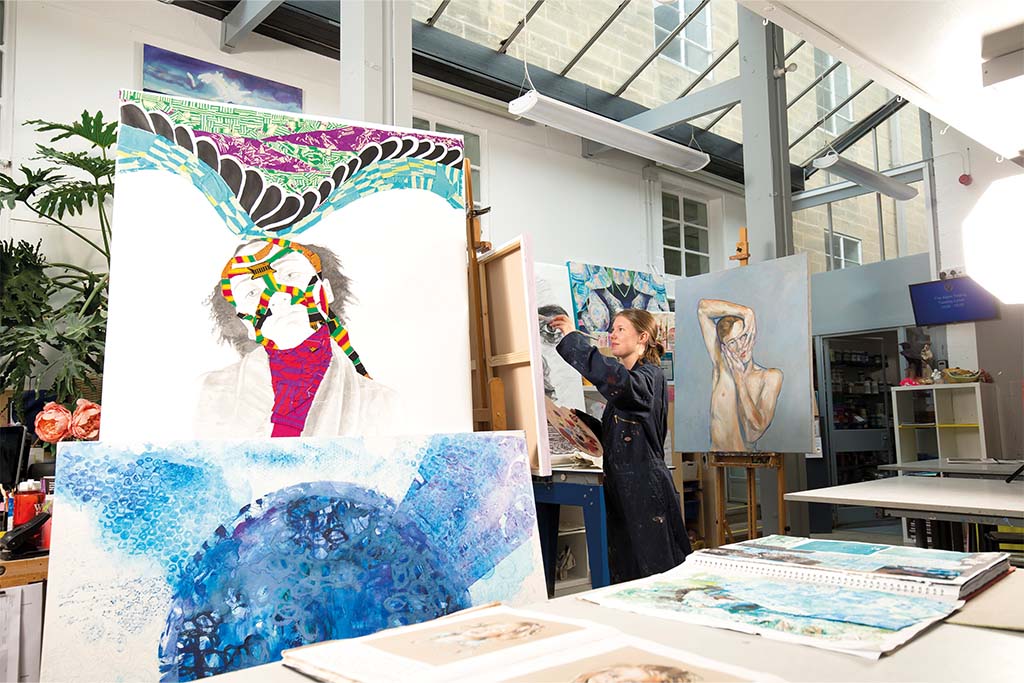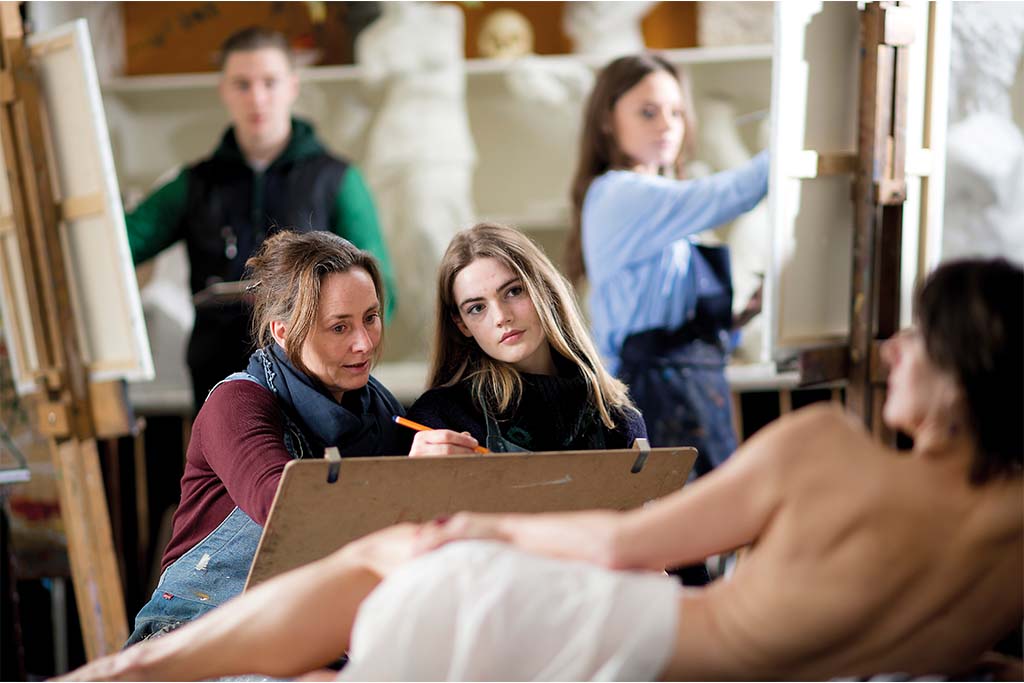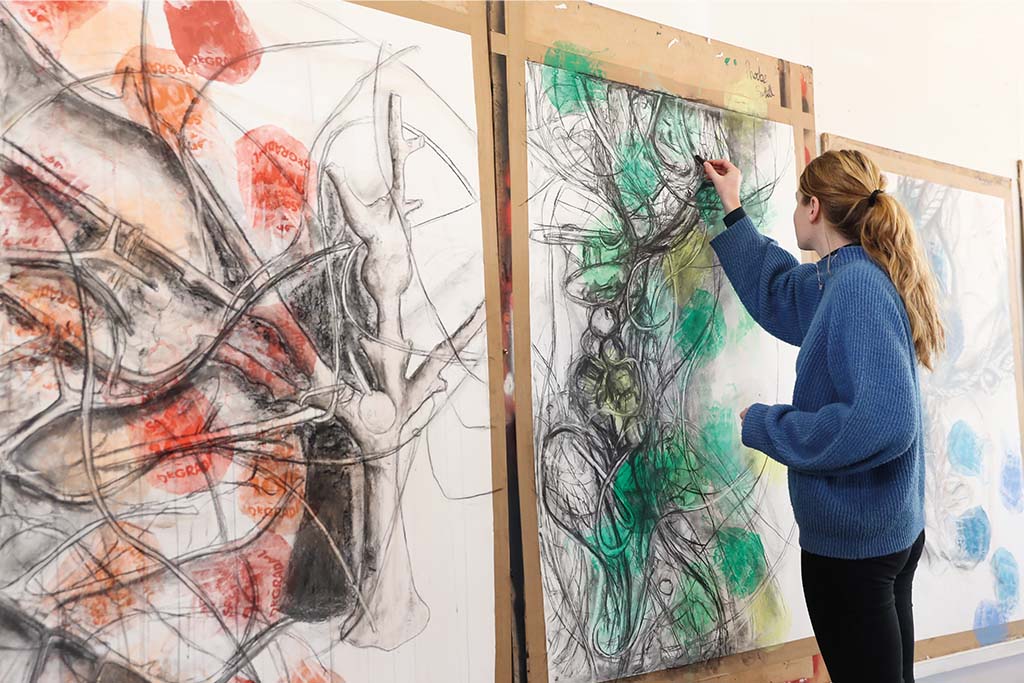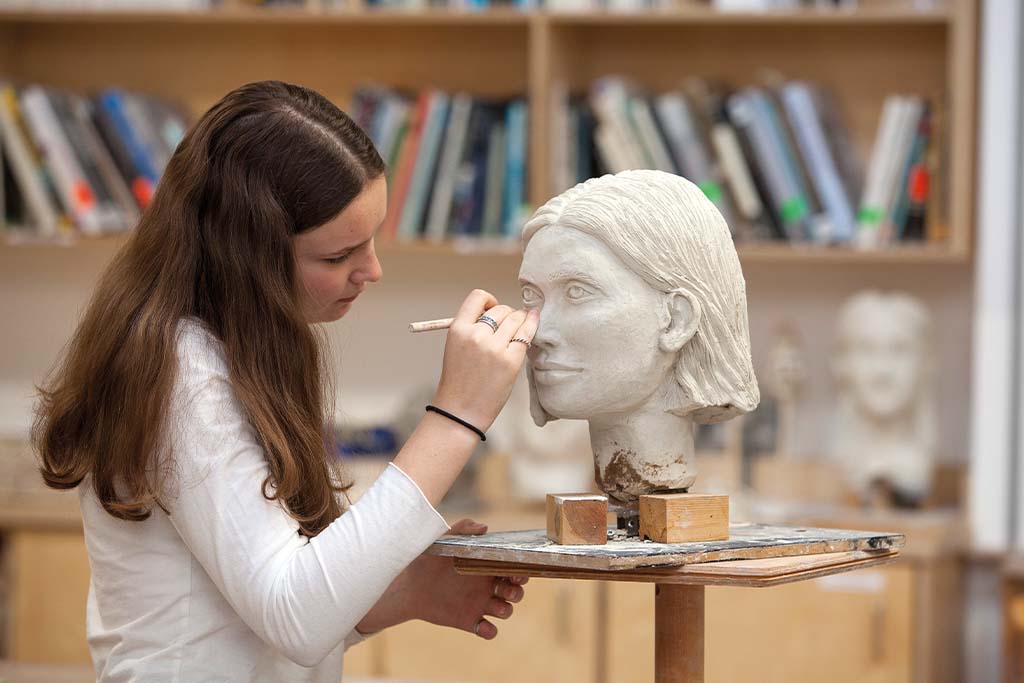
- HOME
- EDUCATION
Insiders’ Guide: Art
By | 2 years ago
Our experts give advice on choosing the best school for a budding artist. By Eleanor Doughty.
If your child has a distinctly artistic side, it can be stressful finding a school that will really help them explore that. Should you be governed by facilities or does a core department philosophy matter more? And who will offer the best advice for moving on to degree work – and beyond. Our experts are on hand to put parents in the picture.

The School Panel:
Candida Cave,
Principal, Fine Arts College, Hampstead
Kimberley Pallot,
Director of Art, St Mary’s Calne
Daniel Preece,
Head of Art, Bedales
Douglas Knight,
Head of Art, Bryanston
1. Why should I send my child to a school that specialises in art?
We specialise in arts but we also specialise in the academic subjects as well. Here, we suggest that students start with four A-levels, of which two would be academic and two creative – for example, Latin and art history alongside fashion and textiles, and art. That way you’re not narrowing your choices for university, but you are expanding your choices based on your desire to focus [on something] which may result in a career in that area. Candida Cave
2. What standard would you expect to see for a scholarship?
For junior scholarships, we’re looking for girls to come to us with a GCSE equivalent level of skill, so we have high expectations. The standard isn’t necessarily just about skill – it’s about the creativity, thinking, and the passion, too. We’re looking for people who have the potential to be a good role model for others, as we are a small community and are all about bringing each other on. Kimberley Pallot
3. What would an art scholarship mean?
Art scholars become part of the art department community, and receive a small amount of money which they can use to spend on anything art-related – a camera, or a trip to Venice to see the Biennale, for example. Within the department, the expectation is that they will be a role model for the other students, support people that we get in to visit, and come to lectures. Our art scholars are ambassadors, mainly through what they do and what they make, and how that is then transposed into the younger years, with the idea that it might give aspiration to other students. Daniel Preece

4. Does A-level art cover the same ground as a foundation year?
In essence, yes – we try to model ourselves on the carousel and variety that a good art foundation would cover. Getting a good A-level grade and getting into art college are not mutually exclusive, they are one and the same. We run workshops so that students can find their strengths, just as you would at art college, and we try and mirror the engagement with high-level thinking. Douglas Knight
5. Are school exhibitions important?
Yes, incredibly so. There is no creative limit as to what the girls can do and achieve. Our artist-in-residence does a lot of exhibitions, and works with the students during enrichment activities. We exhibit in the Big Draw international drawing festival, and we have entered girls’ work in the Royal Academy Young Artists’ Summer Show. Every three years, we do an exhibition in London where we take students’ work, and that of our alumni, parents and staff. Kimberley Pallot
6. Should arts teachers also be practising/selling artists?
All of ours are. We take the view that the best art teaching is given by people who are also practising artists. In all our departments, the tutors are practising, have exhibitions, and write about their work. It lets students see that what they do at A-level doesn’t stop at A-level. Our head of art’s work is in the V&A – it’s really great for students to see where they can end up. It also means that our tutors stay with us for many years, having found the correct balance in terms of their work and their creativity. Candida Cave

7. What facilities should I look for?
There is a lot to be said for good quality art teaching, and that has to be the main focus. We have purpose-built studios including a sculpture studio, a glazing area with kilns, a textiles room, and a darkroom. Having the facilities allows the students the breadth of ambition. Douglas Knight
8. Is collaboration across subjects encouraged?
Absolutely. A wonderful example for us is English and art: we collaborate across all year groups to create a piece of poetry and artwork too. Art is taken seriously, and people are realising that if you want to be a CEO these days, visual literacy, problem-solving and creative thinking are assets that you need to exercise. Access to arts and culture is fundamental for our wellbeing. Kimberley Pallot
9. Do boarders get enough after-school time to work on art projects?
Yes – our art department is open every evening until 9pm, so they can join an activity or work on a project. We have a large multifunctional space, and as long as they’re in the department doing something creative, I’m happy. Daniel Preece
10. What other subjects does art complement?
There are four different art A-levels: fine art, graphics, photography, and fashion and textiles, and any one of those can complement English, art history, film studies, languages, history, and maths. Fine art involves historical research, essay writing, as well as the development of technical and imaginative individual skills. Candida Cave

11. Will I have to pay extra for specialist art supplies?
Normally, no – we’re very well stocked with everything students might need for their work. Douglas Knight
12. Do schools have visiting practitioners?
We do, because I think it’s really important that the students see where their art studies might lead. We’re lucky because a lot of our students’ parents are involved in the arts in different ways, and we have some quite successful artists and theatre designers among them. I am keen to develop a programme where they all come in and talk about what they do so the students see a context to the things that they do and make. Daniel Preece
Tips From the Head of Art
Consider how a school will inspire, challenge, and support your child when choosing a school. Look for those aspects of an art department, and whether that is the best fit for your young person, and look too at the pastoral system. Kimberley Pallot
What we are trying to do at Bedales is teach skills, and encourage making and doing because that’s how pupils learn, through the experience. We try to give them a wide range of skills, and hope that as they develop they will become more confident in following their own lines of enquiry. Daniel Preece
People often ask me whether they are good enough to do art, but what we are looking for is potential, not the finished article. Drawing, for example, is purely part of the curriculum – it doesn’t have to be a main focus. We’ve got students doing film, photography, textiles and painting. There are so many areas in which people can find their skills. Douglas Knight
See the online listings for the schools mentioned here: Bedales School, Bryanston School, Fine Arts College and St Mary’s Calne.



